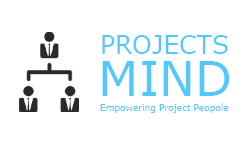Project Planning Tools and Techniques Every Project Manager Should Know
Introduction
Effective project planning is crucial for the success of any project. It involves identifying project goals, defining tasks, estimating resources and timelines, and creating a roadmap to guide the team towards project completion. Project managers play a key role in this process, utilizing various tools and techniques to ensure efficient planning and execution. In this article, we will explore some essential project planning tools and techniques that every project manager should know.
1. Work Breakdown Structure (WBS)
The Work Breakdown Structure (WBS) is a hierarchical representation of the project’s tasks and deliverables. It breaks down the project into smaller, more manageable components, allowing the project manager to assign responsibilities, estimate effort, and allocate resources effectively. By visualizing the project’s scope and structure, the WBS helps in identifying dependencies, sequencing activities, and ensuring efficient task management.
2. Gantt Charts
Gantt charts provide a visual representation of project schedules, displaying tasks as horizontal bars on a timeline. They illustrate the start and end dates of each task, their duration, and any dependencies between tasks. Gantt charts help project managers track progress, identify critical path activities, and manage project timelines effectively. They also facilitate communication and collaboration among team members by providing a clear overview of the project’s schedule.
3. Network Diagrams
Network diagrams, also known as PERT (Program Evaluation and Review Technique) charts, visualize the relationships between project activities. They represent activities as nodes and show the dependencies between them using arrows. Network diagrams help project managers identify critical paths, determine project duration, and assess the impact of changes on the project schedule. They also aid in resource allocation, risk management, and overall project coordination.
4. Risk Management Tools
Risk management is an essential aspect of project planning. Various tools and techniques can be used to identify, assess, and mitigate project risks. These include risk registers, risk matrices, and probability-impact assessment charts. By systematically analyzing potential risks and developing appropriate response strategies, project managers can minimize the impact of uncertainties on project outcomes and improve the chances of success.
5. Resource Allocation and Management
Effective resource allocation is vital for project success. Project managers must have tools and techniques to estimate resource requirements, allocate resources appropriately, and manage resource availability throughout the project lifecycle. Resource allocation tools, such as resource histograms and resource leveling techniques, help project managers optimize resource usage, avoid bottlenecks, and ensure that the right resources are available at the right time.
6. Project Management Software
Project management software provides a digital platform for planning, executing, and monitoring projects. It offers a range of tools and features that aid in project planning, scheduling, task management, communication, and collaboration. Popular project management software includes Microsoft Project, Asana, Trello, and Jira. These tools streamline project planning processes, enhance team productivity, and enable real-time tracking and reporting.
FAQs
1. Why is project planning important?
Project planning is important as it allows project managers to define project goals, estimate resources and timelines, and create a roadmap for successful project completion. It helps in identifying potential risks, managing project constraints, and ensuring efficient resource allocation.
2. What are the benefits of using project management software?
Project management software offers numerous benefits, including streamlined planning processes, improved communication and collaboration, enhanced task management, real-time tracking and reporting, and increased overall project efficiency. It simplifies project management tasks and provides a centralized platform for effective project coordination.
3. How do Gantt charts help project managers?
Gantt charts help project managers visualize project schedules, track progress, and manage project timelines effectively. They provide a clear overview of tasks, their durations, and dependencies, aiding in identifying critical path activities and ensuring timely project completion. Gantt charts also facilitate communication and collaboration among team members.
4. What is the role of risk management in project planning?
Risk management plays a critical role in project planning by identifying potential risks, assessing their impact and probability, and developing appropriate response strategies. It helps project managers minimize the impact of uncertainties on project outcomes, improve decision-making, and enhance overall project success rates.
5. How do network diagrams assist in project planning?
Network diagrams illustrate the relationships between project activities, helping project managers identify critical paths, determine project duration, and assess the impact of changes on the project schedule. They aid in resource allocation, risk management, and overall project coordination by providing a visual representation of task dependencies and sequencing.


Recent Comments